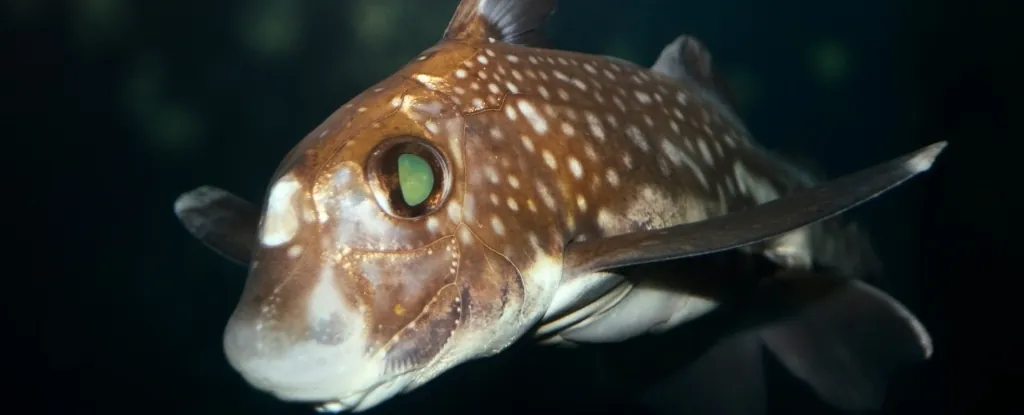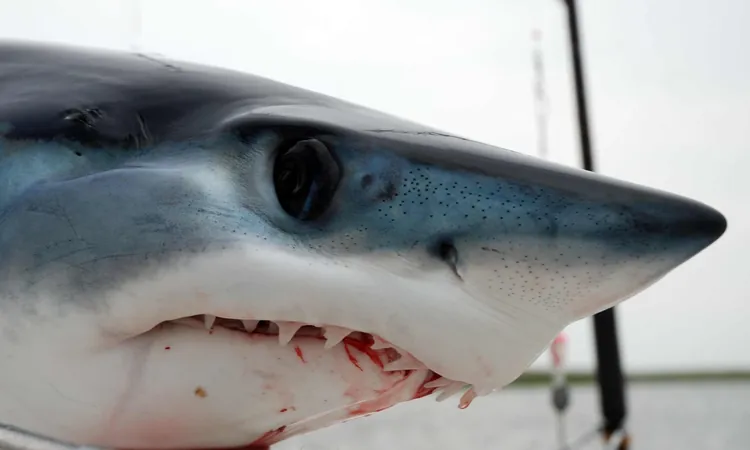
Unlocking the Mystery of Ghost Sharks: Teeth on Their Forehead Used for Deep-Sea Romance!
2025-09-18
Author: Wei
Ever heard of a creature that’s part ghost and part shark? Meet the chimaera, also whimsically known as ghost sharks! These deep-sea marvels boast a peculiar feature: teeth sprouting right from their foreheads!
These unique forehead teeth are part of a retractable stalk called a tenaculum, playing a crucial role during chimaeras’ mating rituals. But are they genuine teeth or just bizarre evolutionary quirks? A team of biologists from the University of Florida and the University of Chicago decided to investigate!
The Fascinating Anatomy of Chimaeras
Chimaeras are not your average sharks; these strange, sometimes venomous fish diverged from sharks around 400 million years ago! While they have cartilage skeletons, they lack the formidable rows of regenerating teeth typical of their more aggressive relatives. Instead, they feature specialized dental plates designed for crushing crustaceans and mollusks.
Interestingly, while sharks are armored with protective scales—known as dermal denticles—chimaeras go mostly nude. Their denticles are confined to the claspers on their pelvis, which they use along with their tenaculum to latch onto females during reproduction.
A Journey into Evolutionary Puzzles
The presence of teeth outside the mouth raises intriguing questions about vertebrate evolution. To explore this phenomenon, researchers studied the spotted ratfish in Puget Sound, gathering fossil evidence and conducting CT scans of its forehead teeth.
Eureka! Fossil remnants from 315-million-year-old chimaeras revealed that the tenaculum originally grew on the upper jaw before shifting to the forehead. This tooth-forming process is strikingly similar to that of modern sharks, suggesting a fascinating evolutionary connection!
Evolution: A Creative Genius
Dr. Michael Coates, a member of the research team, described this discovery as an illustration of nature's ingenious creativity—how existing evolutionary features can be repurposed for new functions. Essentially, the forehead teeth of today are a genetic version of the mouth teeth that help in feeding.
This research shines a light on evolution’s propensity to adapt and restructure! It challenges traditional notions about teeth, opening the door to the possibility that many creatures may have unexpected dental features beyond their jaws.
What's Next in the World of Tooth Discovery?
As researchers continue to delve into the anatomy of various vertebrates, we might soon uncover even more surprising adaptations. Could there be more hidden teeth on creatures we’ve yet to discover? Dr. Cohen concluded with a thought-provoking perspective: every spiky feature could potentially be a form of tooth evolution waiting to be unveiled!


 Brasil (PT)
Brasil (PT)
 Canada (EN)
Canada (EN)
 Chile (ES)
Chile (ES)
 Česko (CS)
Česko (CS)
 대한민국 (KO)
대한민국 (KO)
 España (ES)
España (ES)
 France (FR)
France (FR)
 Hong Kong (EN)
Hong Kong (EN)
 Italia (IT)
Italia (IT)
 日本 (JA)
日本 (JA)
 Magyarország (HU)
Magyarország (HU)
 Norge (NO)
Norge (NO)
 Polska (PL)
Polska (PL)
 Schweiz (DE)
Schweiz (DE)
 Singapore (EN)
Singapore (EN)
 Sverige (SV)
Sverige (SV)
 Suomi (FI)
Suomi (FI)
 Türkiye (TR)
Türkiye (TR)
 الإمارات العربية المتحدة (AR)
الإمارات العربية المتحدة (AR)